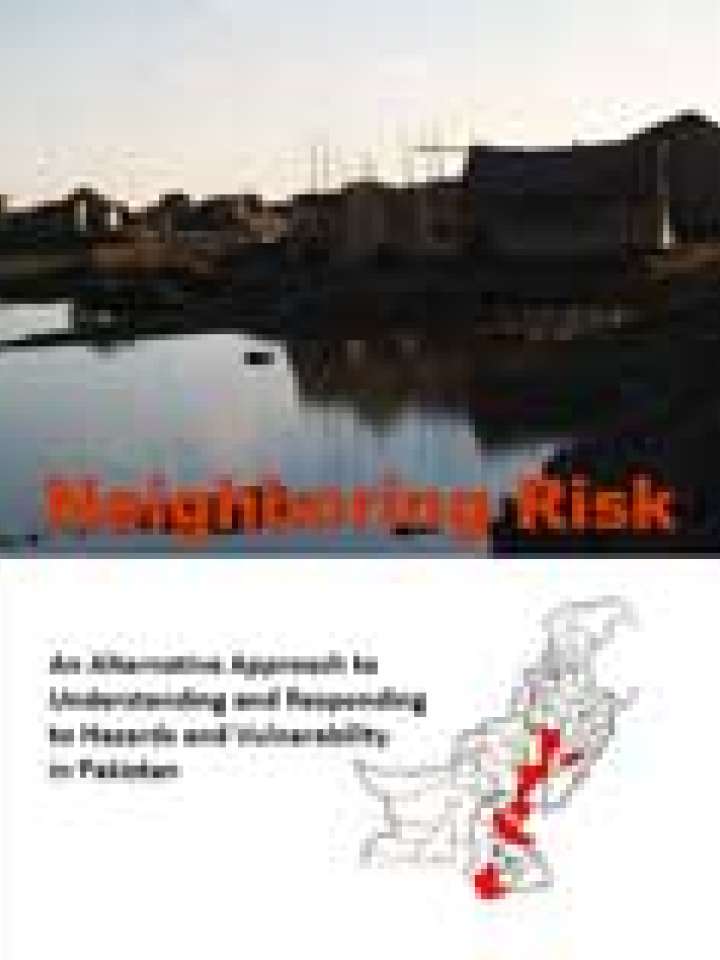Neighboring risk: an alternative approach to understanding and responding to hazards and vulnerability in Pakistan
This report tries to highlight the alternative approach to looking at and dealing with risks and hazards, and suggests ways to create an environment where human rights as well as rights of environment are protected and reflected in the development and governance discourses. It emphasises the importance of making children, their communities and local governments the focal point of risk-reduction strategies.
Neighboring Risk is divided into eight parts - a main report and seven detailed district profiles. The main report is further divided into seven sections. Section 1 introduces the research process, policy context of disaster management, and the conceptual framework the report employs for its structure and analysis. Section 2 presents an overview of hazards and vulnerability that prevail especially in the seven districts studied for the report. Section 3 briefly introduces the physical conditions of the sampled districts that determine the nature of physical risks while section 4 brings forth the overall socioeconomic conditions of the studied districts.
Section 5 contains the results of household survey and discussions with different sections of communities including children, sampled in the seven districts for a deeper understanding of the situation of at-risk communities. Employing the decentralized disaster risk reduction paradigm, section 6 highlights the capacities of local governments and civil society organizations functional in the studied districts.
The recommendations of the report are contained in section 7 which is divided into three sub sections. Subsection 1 sketches broader principles that should be followed while designing disaster risk management priorities, policies and programs especially at the district level. Subsection 2 proposes some practical measures for improving the disaster risk management practices in the sampled districts. Subsection 3 recommends a framework 'making local governance work for sustainable disaster risk reduction'. This framework is based upon the provisions of incumbent local government system and guidelines of Hyogo Framework for Action and Pakistan's National Disaster Management Framework. This section also highlights the important provisions of these instruments.
Explore further
